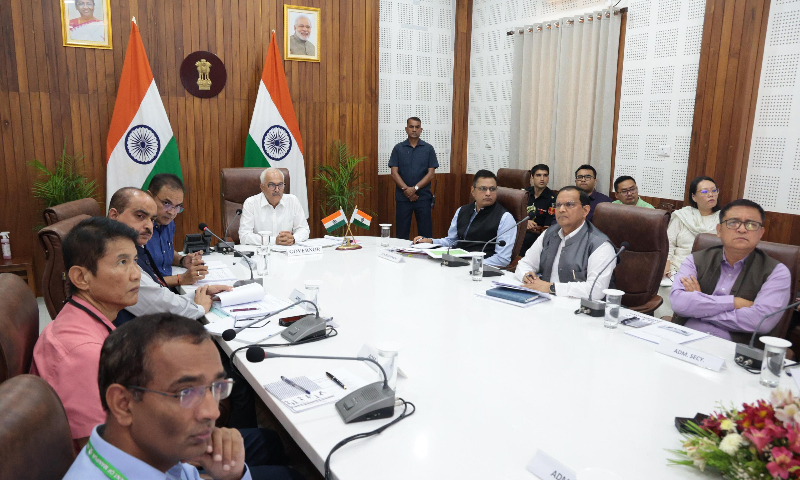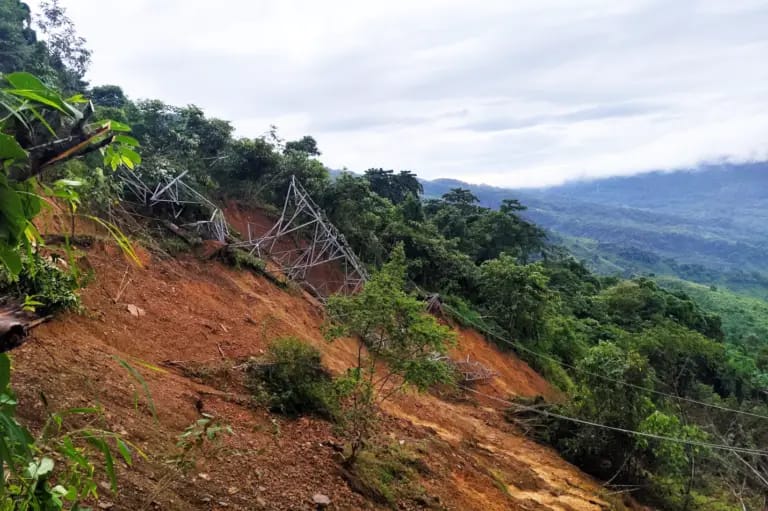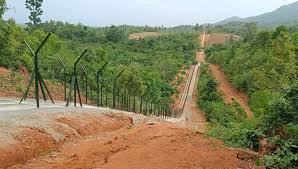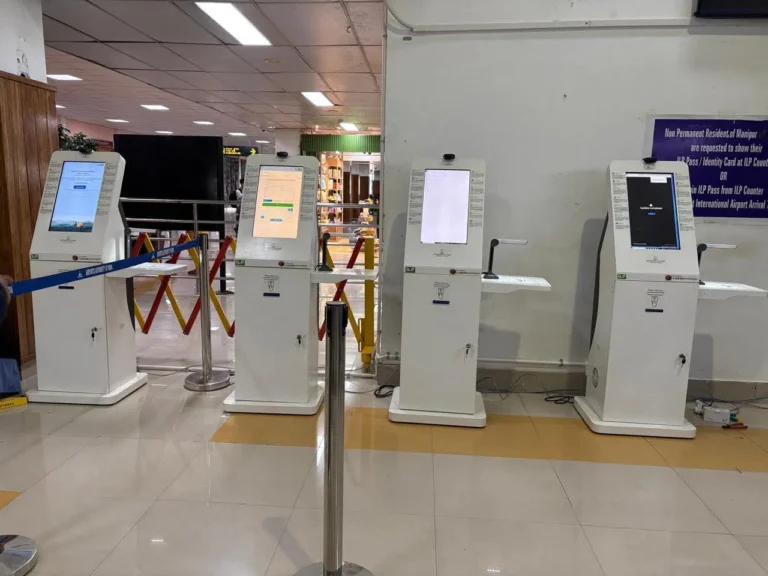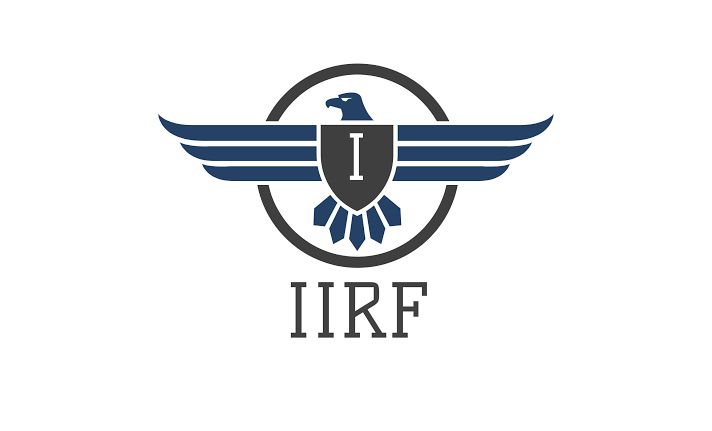DoNER’s Wake-Up Call: Manipur Pushes to Complete Distressed NEC Projects
Summary of the Incident
On July 11, 2025, the Union Ministry of DoNER (Development of North Eastern Region), led by Minister Jyotiraditya Scindia, urged the Manipur government to fast-track the completion of multiple “distressed” development projects overseen by the North Eastern Council (NEC). The virtual review meeting, co-chaired by Governor Ajay Kumar Bhalla and held at Raj Bhavan, Imphal, had Chief Secretary P.K. Singh present a detailed status report. The scope spanned sectors like handloom and handicrafts, polo, tourism, transport, palm oil cultivation, logistics, village development, and PMO-priority projects. Scindia emphasized accelerating execution, while the Governor directed officials to ensure measurable outcomes and sustained focus. The meeting also included officials from NEC and various departments via video conferencing
1. A Crucial Turning Point for Manipur?
Imagine a sleepy town with half-built bridges, stalled solar farms, and half-painted school walls. That’s Manipur’s current snapshot—and the DoNER Ministry just flipped the alarm switch. On July 11, 2025, Minister Scindia, Governor Bhalla, and Chief Secretary P.K. Singh demanded faster action on stalled North Eastern Council projects. From handloom glory to polo tourism, these NICHE efforts are hanging by a thread—and the call is clear: Finish them, now.
2. What Are ‘Distressed Projects’ Anyway?
“Distressed projects” aren’t glitzy failures—they’re essential developments hamstrung by:
- Funding delays
- Technical hold-ups
- Policy hurdles
- Resource shortages
Essentially, these projects hold potential but are stuck halfway, waiting for a push.
3. Why the Urgency? What’s at Stake?
A. Economic Boost
Right now, Manipur’s economy is limping. Completing these projects means jobs, income, and investor confidence.
B. Cultural Revival
Heirloom skills like handloom weaving and polo aren’t just attractive—they connect communities to their past.
C. Tourism Potential
From hills to heritage, a completed tourism ecosystem can catapult Manipur onto travel maps.
D. Infrastructure Gaps
Be it roads, palm oil farms, or logistics hubs, every unfinished project is a roadblock to growth.
E. Trust in Governance
Citizens notice—fast-tracking is both delivery and accountability.
4. The Big Players: Key Figures in the Push
Jyotiraditya Scindia, Union DoNER Minister
Driving policy oversight, pushing for bold patriotism in project completion .
Governor Ajay Kumar Bhalla
Co-chairing with authority, calling for functional execution on every project point .
Chief Secretary P.K. Singh
Operational linchpin, delivering insights on progress and bottlenecks
NEC Officials & State Admin
Engaged via VC, ready to align systems and coordinate follow-ups .
5. The Priority Project Spectrum
Here’s the spread of areas in focus:
Handloom, Handicrafts & Textiles
Ethnic skills powered by legacy—boost local artisans and exports.
Polo Promotion
The Meitei roots of polo have global appeal; branding the state as a polo hub can attract sport tourism.
Tourism Development
From Loktak Lake to tribal culture—lots of potential waiting for functional infrastructure.
Connectivity & Transport
Bad roads = bad access. Improving roads is improving lives.
Palm Oil Cultivation (under NMEO-OP scheme)
Could reduce dependence on imports and uplift farmers.
Logistics Enhancement
Storage + movement infrastructure = business expansion.
Vibrant Villages Initiative
Clusters of growth, tourism, and livelihoods beyond urban centers.
Investment Promotion
Need solid foundation before businesses pour in.
PMO Priority Projects
Flagship initiatives requiring high-level attention.
Monitoring Distressed Projects
A dashboard for these stalled schemes is under review.
6. The Meeting: Zoom Call that Could Transform a State
The virtual huddle—hosted at Raj Bhavan, Imphal, with DoNER Minister Scindia dialing in—saw:
- A detailed presentation by P.K. Singh mapping each project’s status
- Minister Scindia responding with specific feedback and admonishments
- Governor Bhalla urging results and tighter monitoring mechanisms
It felt like a summit—no fluff, just deadline-driven demands.
7. What Scindia Said: Highlights from the Union Minister
From the sources, Scindia emphasized:
- “You must intensify efforts on all fronts”
- “Break past hurdles—whether financial, administrative, or technical”
- “Ensure visible, tangible improvements”
It wasn’t mere encouragement—it was a call to action.
8. Governor Bhalla’s Edict: Accountability with Authority
He reportedly:
- Assigned ownership of projects to specific officials
- Stressed the need for timelines and outcomes
- Urged intra-departmental coordination
This moved it from lip-service to near-executive mandates.
9. What Needs to Happen: A Hands-On Strategy
◆ Speed Up Tribal Skill-Based Projects
Handloom clusters need infrastructure, finance access, and marketing help.
◆ Polo Tourism Boost
Stadium upgrade, training camps, hospitality networks, and festivals.
◆ Tourist Route Enhancements
Road linkages, rest houses, signage, waste management, and hospitality push.
◆ Textile Mill Revivals
Revive small mills with eco-process support, brand backing, and export linkage.
◆ Palm Oil Outreach
Formation of farmer cooperatives, agro-extension support, and procurement systems.
◆ Logistics Infrastructure
Cold storage hubs, packaging units, better trucking routes.
◆ Village Economy Clusters
Cluster-based planning—tourism + crafts + agri projects.
◆ Investment-Friendly Governance
Single-window applications, land policies, fiscal incentives.
◆ Infrastructure & Connectivity
Complete stalled roads, bridges, electrification projects via NESIDS and PM-DevINE.
10. System Reforms to Remove Bottlenecks
- Vendor Vetting: Ensure contractors are qualified, not just low-bidding.
- DPR & Monitoring: Full and frequent reviews to stay on track.
- Digitized Tracking: Real-time dashboards like Gati Shakti.
- Fund Release Simplification: Align with NEC/DoNER rules to avoid delays.
- Inter-Agency Coordination: Cut cross-agency delays.
- Grievance Redress Mechanism: Empower stakeholders.
Final Word
The DoNER directive is more than a nudge—it’s a mandate. Done well, these distressed projects will prove Manipur’s ability to transform. They can revitalize culture, infrastructure, livelihoods, and state credibility. But it’s not about lofty promises—it’s about timelines, transparency, technical competence, and political will. For Manipur, the time to deliver is now.
FAQs
1. What qualifies a project as “distressed”?
Projects suffering from delays due to funding, administrative, land, or technical issues are tagged as “distressed” and flagged for urgent action.
2. Which sectors were prioritized in the DoNER-NEC review meeting?
Key focus areas include handloom and handicrafts, polo tourism, overall tourism, transport/connectivity, palm oil under NMEO-OP, logistics, vibrant villages, investments, and PMO priority schemes
3. What directives did DoNER Minister Scindia issue?
He urged the Manipur government to intensify efforts, overcome challenges, and ensure tangible, result-oriented implementation on each project .
4. How do NEC and DoNER schemes differ?
NEC funds region-specific gap projects, while DoNER coordinates central funding across NER, including major schemes like PM-DevINE and NESIDS
5. How can citizens help accelerate project delivery?
By demanding project timelines in local forums, monitoring progress, sharing feedback, and holding both elected and appointed officials accountable.
